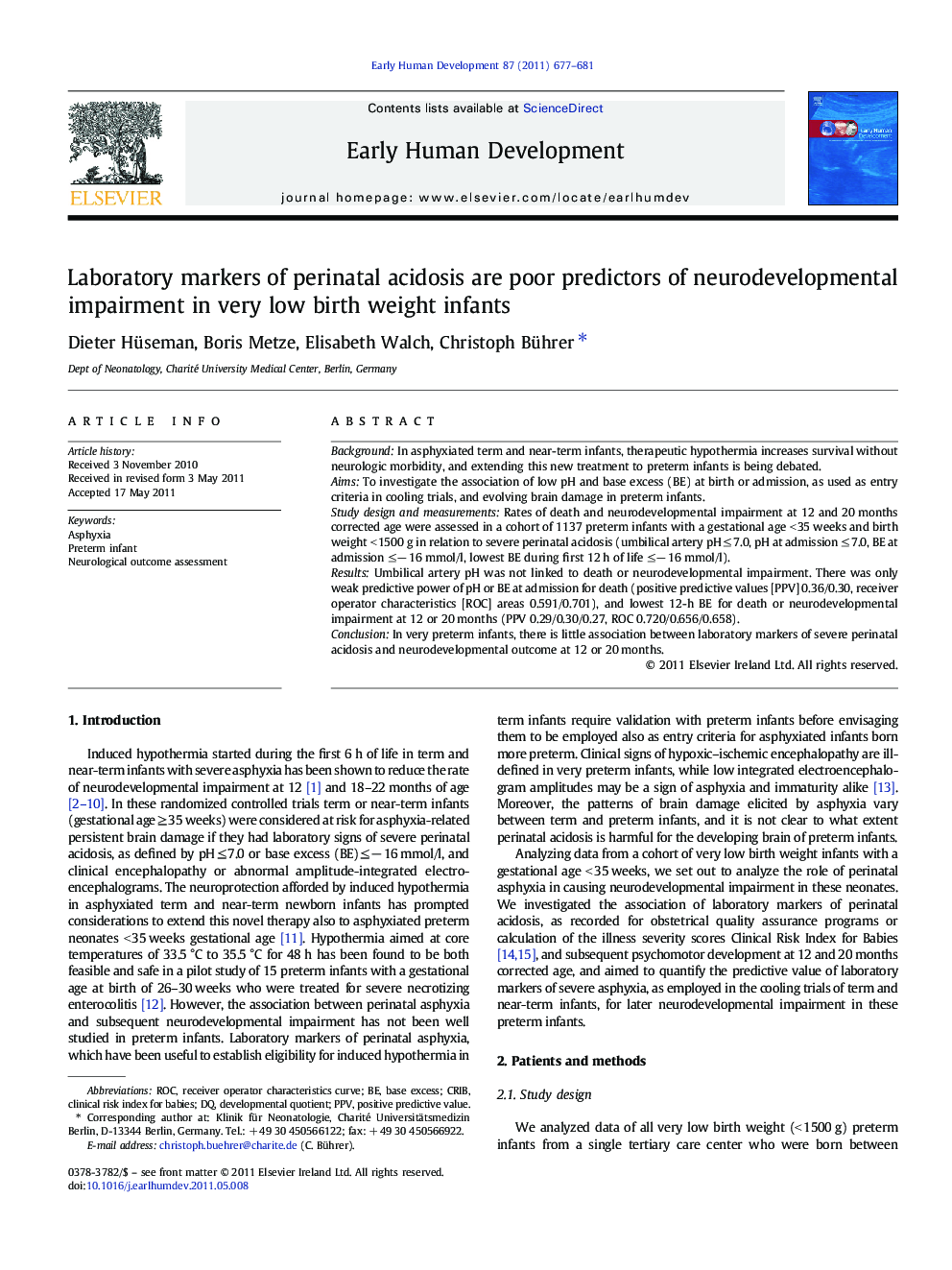| Article ID | Journal | Published Year | Pages | File Type |
|---|---|---|---|---|
| 3917399 | Early Human Development | 2011 | 5 Pages |
BackgroundIn asphyxiated term and near-term infants, therapeutic hypothermia increases survival without neurologic morbidity, and extending this new treatment to preterm infants is being debated.AimsTo investigate the association of low pH and base excess (BE) at birth or admission, as used as entry criteria in cooling trials, and evolving brain damage in preterm infants.Study design and measurementsRates of death and neurodevelopmental impairment at 12 and 20 months corrected age were assessed in a cohort of 1137 preterm infants with a gestational age < 35 weeks and birth weight < 1500 g in relation to severe perinatal acidosis (umbilical artery pH ≤ 7.0, pH at admission ≤ 7.0, BE at admission ≤− 16 mmol/l, lowest BE during first 12 h of life ≤− 16 mmol/l).ResultsUmbilical artery pH was not linked to death or neurodevelopmental impairment. There was only weak predictive power of pH or BE at admission for death (positive predictive values [PPV] 0.36/0.30, receiver operator characteristics [ROC] areas 0.591/0.701), and lowest 12-h BE for death or neurodevelopmental impairment at 12 or 20 months (PPV 0.29/0.30/0.27, ROC 0.720/0.656/0.658).ConclusionIn very preterm infants, there is little association between laboratory markers of severe perinatal acidosis and neurodevelopmental outcome at 12 or 20 months.
